Few watery scenes are quite complete without aquatic birds in the picture. Ducks drifting across a country pond. Gulls wheeling in the sky above the beach, before they divebomb an unsuspecting tourist for their chips. Kingfishers flashing along a river, a bright dazzle of colour against the water.
They’re so much a part of the scenery that aquatic birds have had a long relationship with humans. In some cases, that link has been much more literal. For example, some believed drowned seamen became gulls. Capturing a gull and keeping it on a ship brought bad luck (Woolf 2022: 95).
But with a long relationship comes folklore. These birds predict the weather, foretell death, ward off intruders, or enjoy holy protection. In this article, we’ll look at folklore associated with the cormorant, curlew, duck, goose, kingfisher, and puffin.
Cormorant
You can find cormorants both in coastal regions, and inland at rivers or lakes. You often see them perched on something with their wings outstretched to dry. This is the appearance adopted by Satan in John Milton’s Paradise Lost.
Cormorants were sometimes called the sea crow or coal goose. They also gained the nickname of Isle-o’-Wight parsons, since their shaggy appearance looked like a clergyman’s black gown (Woolf 2022: 23). In September 1860, a cormorant took up a perch on St Botolph’s Church in Boston, Lincs. When it remained there the following day, the locals decided it was a bad omen. The church caretaker shot it. News reached them that the Lady Elgin had sunk on Lake Michigan at the same time the cormorant appeared. Two of the passengers were Boston’s MP, Herbert Ingram, and his eldest son (Woolf 2022: 24).
Artemidorus, the 2nd-century Greek writer and dream interpreter, decreed that cormorants meant danger for sailors. Yet they didn’t mean death because cormorants seemingly couldn’t drown. Their ability to dive beneath the waves meant lost things would remain lost (Woolf 2022: 24).
Curlews
Curlews are wading birds, found in moorland in the summer and estuaries in the winter. In folklore, they’re sometimes linked with Seven Whistlers. The Seven Whistlers are a group of birds that flew at night in British and Irish folklore. Their calls always foretold disaster. As an example, in 1682, locals in Hartley in Northumberland said they’d heard the birds the night before a dreadful mine disaster that killed 204 miners (Tipp 2019).
The curlew was one of several birds considered to make up the Seven Whistlers. People considered their eerie calls as a bad luck or even death omen. On one occasion, a flock of curlews flew overhead and a boat overturned, drowning seven men (Armstrong 1959: 219).
They were called “wisht hounds” in Devon or “Gabriel’s hounds” near Sheffield (Armstrong 1959: 219). Such names evoke the Wild Hunt, the spectral procession sweeping up souls in its wake.
The sound possibly also explains why in Ayrshire, a curlew was called a ‘whaup’, which was a goblin that lurked in the eaves of a house at night looking for bad people to spirit away (Woolf 2022: 44).
Elsewhere in folklore, curlews were an Irish weather omen. Flocks going from east to west meant incoming frosty weather. A constant curlew cry meant rain was on the way. The latter so closely mimicked a ship’s alarm call that coastguards sometimes feared wrecks when they heard curlews (Woolf 2022: 45).
Ducks
Ducks are perhaps some of my absolute favourite aquatic birds. They’re fairly common birds, although ‘duck’ refers to a wide variety of members of their family. In a somewhat topical twist given the current Paris Olympics, Sequana, the goddess of the Seine, is sometimes depicted standing in a duck boat. Ducks were her familiars, which makes sense for a river goddess.
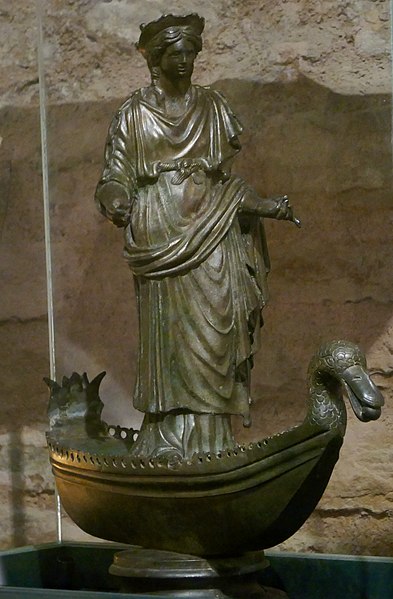
In Topographia Hibernica, Giraldus Cambrensis talks about teal ducks living in Leinster. They swam in a pool created by the holy spring of St Colman and were even sacred to the saint. People could hand-feed the tame ducks. But if anyone threatened them, or misfortune befell the church, the teal flew off until the offenders were punished. They were apparently so sacred that predators would die after even trying to eat them. If you somehow managed to pick one up in your bucket of cooking water, the water couldn’t boil until you released the teal back into its pool. Even as late as the Norman era, an archer killed one, but the water refused to boil for hours. The archer apparently died soon after (Woolf 2022: 60).
My personal favourite among the holy ducks is the so-called Cuddy ducks of Northumbria. During the seventh century, St Cuthbert moved to Inner Farne, the largest of the Farne Islands, where he lived as a hermit. It’s more famous now for boat trips to see the puffins, but in St Cuthbert’s day, it was a favoured site for eider ducks to raise their young. The saint was so fond of the ducks that he banned anyone from catching or killing them in the breeding season. Due to his local nickname of Cuddy, the eider ducks gained their new name of Cuddy’s ducks (Woolf 2022: 61).
It seems the ducks were so tamed by Cuthbert that they even nested beside the altar at the chapel on Inner Farne. One monk apparently mocked Cuthbert’s protection of the ducks and died after doing so. Other monks also suffered from eating or annoying the ducks (Jenkins 2015). And yes, eider ducks are where we get the name ‘eiderdown’, referring to the bed covering that preceded the duvet.
A Scottish tradition held that ducks were sacred to the Virgin Mary. As a result, you couldn’t harm a duck with her young (Woolf 2022: 61).
Even ducks offer their own slice of weather folklore. If ducks quacks more or louder than usual, rain is on the way.
Geese
Where people often like ducks for being comical or cuddly, they will absolutely hate geese since they can be aggressive. When I was doing my MA, the university campus was home to flocks of geese. They would often congregate at the doors to the student accommodation, meaning students couldn’t get out unless they wanted to brave the geese.
Geese were sacred to Aphrodite and the ancient Greeks considered goose fat an aphrodisiac. There are even statues showing Aphrodite riding a goose.
In ancient Rome, they kept geese as sentries in Juno’s precinct. When the Gauls tried to scale the walls at night in c. 387 BCE to enter the city, the geese made so much noise that the Roman soldiers woke up and fought off the Gauls (Apel 2023).
Scholars theorise geese must have been likewise important to the Celts after finding a figurine of what may be Brigantia in Brittany with a goose-topped helmet. People describe Brigantia as a war goddess, and if you’re going to associate any bird with war, geese are a pretty good choice. Elsewhere, Epona is sometimes linked with geese, as well as horses.
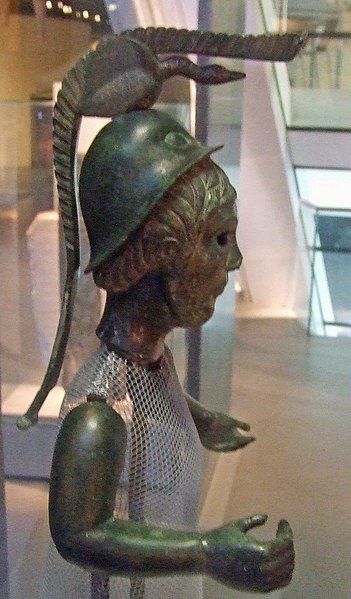
Julius Caesar noted that the ancient Britons didn’t eat geese but kept them “for entertainment” (Armstrong 1959: 32). If the Britons used them as guard birds the way the Romans did, it’s unsurprising they might put a prohibition on eating them.
Not so elsewhere in Europe. Germanic people made sacrifices of geese to Odin at the autumn equinox (Armstrong 1959: 30).
Geese omens
Like other aquatic birds, people used geese flight patterns to predict the weather. In Ireland, winter would be long if the geese arrived early in autumn. Low flying meant rain was on the way, but it would be fine if they flew high. If a goose stretched its neck and flapped its wings, a gale was coming. In England, people read the shapes geese made in the sky to determine how many frosty weeks were coming (Woolf 2022: 78).
The divinatory possibilities didn’t end there, either. Tradition dictated that people ate roast goose for Michaelmas Day (29 September), so they dried the breastbone and checked it for omens the following day. A dark bone meant they could expect severe weather, though a light one foretold a mild winter (Armstrong 1959: 29).
According to Marie Trevelyan, geese laying one soft and one hard egg foretold misfortune in the family. It was unlucky to bring eggs into or out of the house after dark. If a grey goose wandered into a neighbour’s yard, it meant slander was afoot. Eating goose was bad luck unless you made a pie or soup from the giblets. Geese wandering from the farmyard and befriending strangers meant a fire might break out. If a goose flew over the house, it meant someone in the house would die. On the bright side, finding goose or duck feathers stuck in the ground meant money or good news would reach you before the end of the day (1909: 115).
The standing stones on Adlestrop Hill in Oxfordshire are known as the Grey Geese. According to legend, a woman was driving her flock of geese to pasture when a witch demanded a bird. The woman refused, and the witch cast a spell on her. When the woman awoke hours later, the geese had been turned into the standing stones (Woolf 2022: 81).
Kingfisher
While we consider kingfishers to be a dazzling blue, their feathers are not actually that colour in reality. Instead, the structure of the feathers scatters blue light, meaning they change colour depending on the light’s direction (Woolf 2022: 109). At one point, people prized their feathers to ward off lightning or to bring prosperity. People might hang a dead kingfisher upside down to use it as a weathervane, believing its beak would point towards the wind (Woolf 2022: 112). Elsewhere, Giraldus Cambrensis recommended using dead kingfishers to repel moths from your clothes.
Some think their name is a link to the Fisher King from the Grail stories, though in 1544, the name was ‘kynges fissher’. A breeding pair might catch 115 fish per day, so perhaps their name simply refers to their fishing prowess. They are, it seems, the king of the fishers (Woolf 2022: 110).
An old name was ‘halcyon’, after the Greek myth in which Ceyx, King of Trachis, drowned in a shipwreck. His wife, Alcyone, found his body on the shore, and the gods turned them into birds so they could be together forever. Because her father made the sea calm every year so she could build a nest on the ocean surface, the settled weather in November became ‘halcyon days’ (Woolf 2022: 110). This often falls around 11 November, or the Feast of St Martin, and you won’t be surprised to hear the bird was sacred to St Martin. Alcyone is also the brightest star in the Pleiades constellation.
Puffin
Puffins are sometimes called sea parrots, though in the north they were sometimes called a ‘coulter neb’, with ‘neb’ referring to their bill, and ‘coulter’ being a plough blade (Woolf 2022: 164). Many consider them quite clownish, and a group of puffins is called a circus.
In Scotland, they were called ‘Tammie Norie’, a term that also referred to a boy too shy to approach a girl, while in Northumberland, they were ‘Tommy noddies’.
Their Latin name, Fratercula arctica, meant ‘little friar of the Arctic’ thanks to the fact many hermits and missionaries lived on islands frequented by puffins. One of these was Inner Farne, home of St Cuthbert. While Cuthbert is more famous for his link with the eider ducks, he was depicted in the late 19th century as an early environmentalist, particularly protecting aquatic birds (Jenkins 2015).
This Christian connection continues since the Pictish saint Ethernan lived on the Isle of May in the Firth of Forth, favoured by puffins. In Ireland, some believed they were the souls of monks, which explained why people wouldn’t eat them.
In Iceland, people used them as a weather forecaster thanks to its ability to survive storms (Woolf 2022: 166). Seeing them flying back into land heralded a storm. Fishermen also used puffin dive sites to guide them to the best fishing spots.
What do we make of this folklore of aquatic birds?
We can see four key themes among these particular aquatic birds.
And the first is the use of birds as weather omens. It’s not necessarily divination in a more mystical sense, it’s more an observational sense. If the birds behave in a particular way, and then you get a particular weather condition, you would soon start to notice.
The second use is death omens. These ones are more likely coincidence. Someone heard a distinctive call of a bird and then something horrible has happened, then they’ve linked the two.
It doesn’t take into account all the times that you’ve heard that particular noise and someone hasn’t died, or all the times Someone has died and there hasn’t been a bird call. It requires that distinctive element so you notice it.
The third theme is aquatic birds under holy protection, and a lot of these birds are associated with either gods, goddesses, or saints. And I think that’s really interesting, because it doesn’t always necessarily make sense from a religious point of view, it can also be because that saint was fond of them.
And this leads us on to the final theme; the idea of companionship and protective services. The eider ducks became Cuthbert’s companions on an island where he literally didn’t see people. But when we look at the goose, people do keep them as pets, but it’s they’re quite useful because they’re so noisy and aggressive. They make good guards.
These aquatic birds have both a positive and a negative relationship with humans, depending on whether they’re seen as a good omen or a death omen.
Which of these aquatic birds are your favourite?
References
Apel, Thomas (2023), ‘Juno’, Mythopedia, 19 May. https://mythopedia.com/topics/juno. Accessed on 7 Jul. 2023.
Armstrong, Edward A. (1959), Folklore of Birds, Boston: Houghton Mifflin.
Jenkins, John (2015), ‘St Cuthbert’s Ducks’, Pilgrimages & England’s Cathedrals, https://www.pilgrimageandcathedrals.ac.uk/blog/st-cuthbert%E2%80%99s-ducks-1446120484.
Tipp, Cheryl (2019), ‘The tale of the seven whistlers’, British Library: Sound and vision blog, https://blogs.bl.uk/sound-and-vision/2019/02/the-tale-of-the-seven-whistlers.html.
Trevelyan, Marie (1909), Folk-Lore and Folk-Stories of Wales, London: Elliot Stock.
Woolf, Jo (2022), Britain’s Birds: A Treasury of Fact, Fiction & Folklore, London: National Trust Books.
Nutty about folklore and want more?
Add your email below and get these posts in your inbox every week.
You'll also get my 5-step guide to protecting your home using folklore!



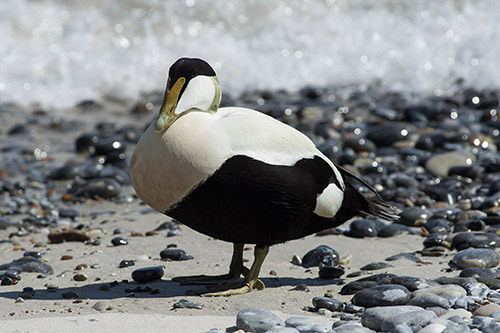
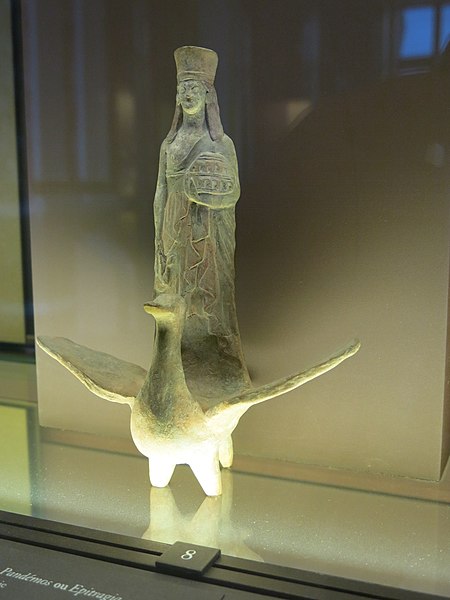
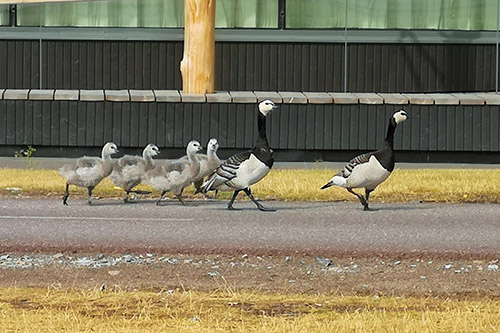

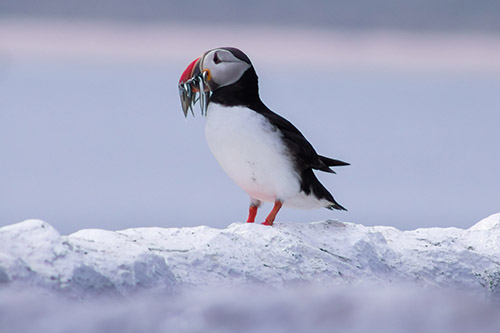
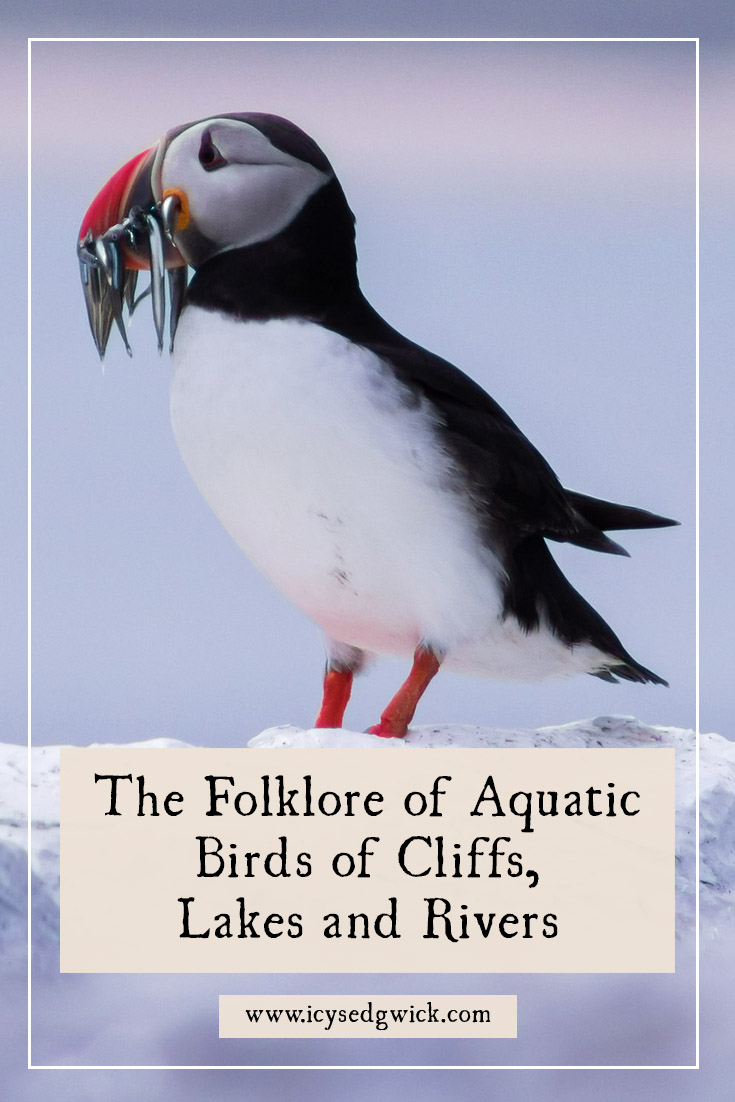





This was a particularly good post! Thank you.